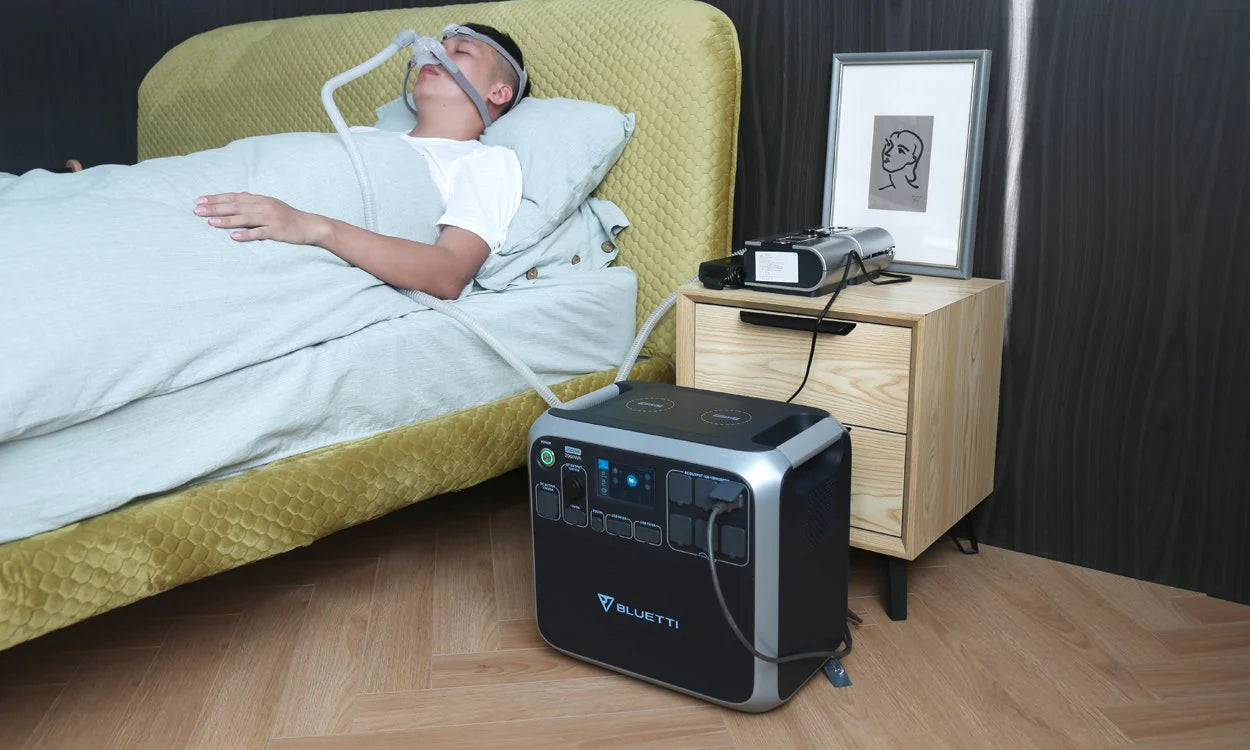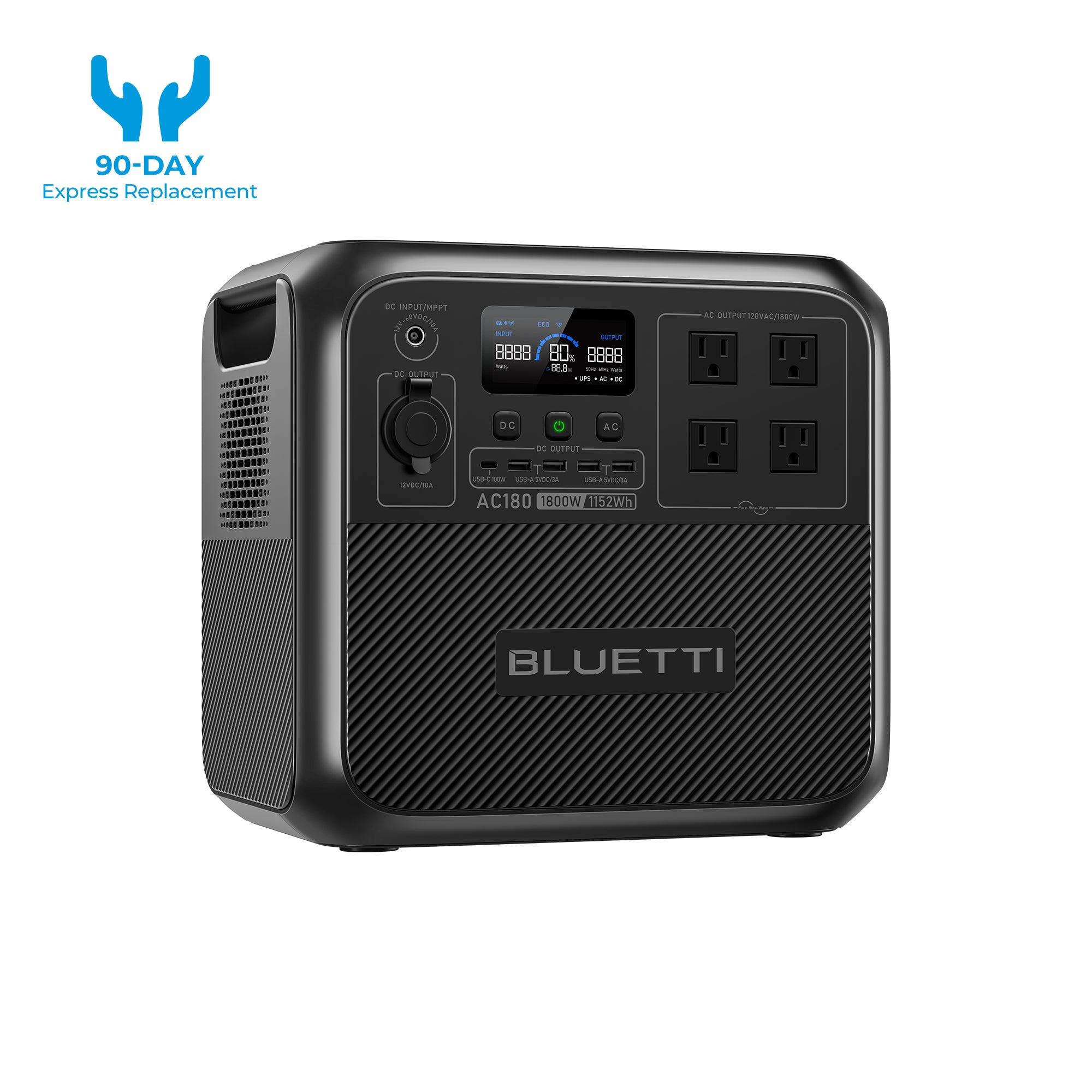Your phone buzzes with a tornado alert—now what? Should you take cover immediately, or is it simply a reminder to stay alert?
Many people mix up tornado watches and warnings, but knowing the difference could make all the difference when it matters.
According to the National Oceanic and Atmospheric Administration (NOAA), over 80 deaths and 1,500 injuries are associated with tornadoes each year in the United States.
The two terms are often confused because they indicate different levels of severity. This article will define tornado watches and warnings, show their significance, and present a complete emergency preparedness list that includes portable power stations and emergency kits as vital tools during emergencies.
Throughout this text, we will address frequently asked queries while providing real-case examples and additional tips that aid understanding and reaction to vital weather alerts.
Tornado Watch vs. Warning: Definitions and Differences

What is a Tornado Watch?
The National Weather Service (NWS) issues tornado watches to inform people that particular areas can develop tornadoes because weather components create suitable conditions. The atmosphere creates conditions with wind shear instability and moisture, which can result in tornado development.
To watch for a tornado indicates favorable meteorological conditions, but it does not suggest spotted tornadoes or their upcoming presence.
A tornado watch means dangerous weather conditions are possible, so stay alert and prepare. The upcoming weather conditions demand you to inspect your emergency procedures and watch the forecasts, along with checking your prepared emergency supplies.
What is a Tornado Warning?
The situation becomes extremely critical when a tornado warning is issued. The warning signals that a tornado either exists within your area or that the weather radar indicates its presence.
According to the National Weather Service (NWS), the average lead time for a tornado warning is only 13 minutes. That means when you hear the warning, every second counts—act immediately.
You should immediately take refuge while constantly monitoring radio broadcasts or weather stations for information.
The Main Difference
The main distinction between tornado watches and warnings exists in their respective levels of threatening emergency. When a watch is issued, the message is to prepare yourself, and when a warning alert is issued, you must take immediate protective action.
The difference in terms between a tornado watch and a warning helps you maintain appropriate responses without feeling panicked or relaxed during a dangerous situation.
|
Alert Type |
What It Means |
What to Do |
|
Tornado Watch |
Conditions are right for a tornado. Stay alert. |
Prepare, check emergency supplies, and monitor the news. |
|
Tornado Warning |
A tornado has been spotted or detected by radar. |
Take cover immediately. Go to a safe location. |
Real-Life Examples and Case Studies

The Joplin Tornado (2011)
Imagine hearing a tornado warning but thinking, ‘It won’t hit my house.’ That’s what many in Joplin, Missouri, thought in 2011—until an EF5 tornado tore through the town, killing 161 people. Some didn’t take shelter in time. Their story is a reminder that every tornado warning should be taken seriously.
The Moore Tornado (2013)
An additional destructive natural disaster struck Oklahoma when the Moore tornado appeared. Early warning systems with improved communication methods helped protect numerous people because residents found safety before the storm arrived. Such an incident serves as proof that maintaining information and readiness protects lives.
The Tuscaloosa-Birmingham Tornado (2011)
An EF4 tornado devastated wide areas in Alabama. Survivors survived because they had enacted emergency procedures alongside prompt warning protocols.
The 2019 Dayton, Ohio Tornado Outbreak: Over 40 Tornadoes in One Night
Multiple tornadoes, one EF4, and widespread destruction in Ohio. The tornadoes struck overnight, and many people were caught off guard.
Importance and Urgency Comparison
Protecting your safety demands a correct understanding of the distinction between watch and warning conditions. Here’s why:
Tornado Watch:
-
Gives you time to prepare.
-
You can check current weather updates to remain informed.
-
A watch enables you to examine your emergency kit together with your emergency plan.
Tornado Warning:
-
Requires immediate action.
-
The warning suggests a tornado currently exists on the surface or it will soon emerge.
-
You need to take shelter emergency procedures right away when warnings are detected.
Not taking action during a tornado watch leaves you at risk because a warning may be announced later without proper preparation, yet failing to act upon a warning will cause fatal results.
Alarmingly, over 39% of all tornado-related deaths occur in mobile homes, highlighting the necessity for immediate action upon receiving a warning.
Preparation Checklist for Tornadoes

You must develop plans, stay alert, and take specific measures to protect everyone from the dangers of a tornado.
The timing of tornado strikes is unpredictable, so developing an evacuation plan with the required items remains fundamental for survival.
These steps constitute tornado preparation protocols and include forming emergency kits alongside home reinforcement procedures, along with notifications about weather events.
1. Create an Emergency Kit
Your emergency kit is the primary element for protecting yourself against tornado danger. The emergency kit contains every survival essential you need to manage 72 hours of Electricity, Water, and Outside Help unavailability.
Imagine the power’s out for three days, and stores are closed. What will you eat?
Your emergency kit should include non-perishable foods like canned goods and granola bars that don’t need refrigeration. Also, pack at least one gallon of drinking water per person per day to stay hydrated.
A manual can opener must be included in your emergency kit.
The next items to include in your kit should be flashlights, batteries, and a first aid kit containing medications as required.
A waterproof container should hold vital records, including your identification, insurance papers, and medical documents.
Portable Power Station for Emergency Power
A portable power station like the BLUETTI AC180 can be a game-changer during power outages. Unlike gas generators, it provides clean energy that is safe to use indoors.
With 1,800W of power (and a 2,700W surge capacity), it can keep your phone charged, run essential medical devices like CPAP machines, and even power small appliances like a mini fridge. It recharges fast—up to 80% in just 45 minutes—so you’re never left in the dark for long.
Plus, it works with solar panels, making it an excellent option for long-term power outages or off-grid use.
The BLUETTI AC180 and Elite 200 V2 are excellent portable power stations that enable you to maintain phone and radio battery levels and operate critical devices when the power goes out.
The power stations prove most helpful in maintaining the operation of medical tools and small appliances following extensive power disruptions.
2. Identify a Safe Shelter
Choosing the correct shelter space for a tornado requires the same importance as possessing suitable supplies.
A basement and interior rooms on the lowest floor provide the safest shelter within a house.
All tornado shelters must be situated distantly from windows to protect occupants from flying debris, representing the main tornado hazard. Having a conventional building for shelter should be determined in advance because mobile homes provide little protection against tornadoes.
Your household members must know the location of your safe room and practice rapid movements to reach it. All users visiting sites such as public facilities or workplaces should understand both emergency evacuation plans and locations for designated shelter areas.
3. Stay Informed
The essential element for tornado season safety remains to stay knowledgeable about weather patterns. The NOAA Weather Radio is the most dependable instrument for receiving present-time alerts and breaking updates.
The radio buttons are made to function during blackouts, so users stay informed. Trustworthy weather apps downloaded on smartphones should have emergency alert functions enabled for weather notifications.
Local governments operate text and email notification services that deliver severe weather warnings to their subscribers. The best action during a tornado watch involves watching the sky while monitoring closely for weather alerts.
Act immediately after receiving a tornado warning since waiting for tornado views or sounds is not safe.
After a tornado, power outages may last for hours or even days. A portable power station ensures you can charge communication devices, keep medical equipment running, and power small appliances while waiting for normal service to be restored.

4. Secure Your Property
Making preparations for protecting your property will reduce tornado-related destruction. Begin your preparedness actions by cutting trees along with all loose branches because windstorms may turn these elements into flying hazards.
Keep doors and windows safe by installing storm shutters or plywood to prevent flying debris entry. Putting outdoor furniture items along with your grill and loose possessions safely indoors is your best bet, or you should ground them firmly to a stable surface.
Roof examinations must occur to identify and repair damage that would reduce wind resistance. The implemented security measures will not completely safeguard your building, but they will substantially minimize its vulnerability to destruction.
A portable power station can also help power electric tools, such as drills and saws, for securing your home before and after a storm. If your home experiences flooding, you can also keep a sump pump running, reducing water damage.

5. Practice Your Plan
Any emergency plan fails to serve its purpose when there's no proper understanding of how to execute it. During tornado emergencies, you should establish preparedness protocols for staying safe if you become separated from your family by deciding on an outside meeting spot.
Regular family tornado drills should be done to teach everyone their responsibilities during emergencies and their evacuation points. The practice should include quick movements to reach your shelter while testing responses from different family members throughout the house.
Safety drills for children should combine educational materials that show them how to maintain calm in emergencies while following necessary directions.
FAQs
1. How long do tornado watches and warnings last?
Warning periods for tornadoes are usually around 30 minutes, but tornado watches stay active for 4 to 8 hours.
2. Can a tornado watch turn into a warning?
Yes, a tornado watch can escalate into a warning if conditions worsen or a tornado is detected. The average lead time for tornado warnings has increased substantially, from-10 to-15 minutes in 1974 to about 15 minutes as of 2013, thanks to advancements in detection and forecasting.
3. What should I do if I’m driving during a tornado warning?
Escaping from a tornado through speed is never possible. If you can, seek shelter in a nearby solid structure. If that isn’t possible, pull over, leave your car, and lie flat in a low-lying area like a ditch, covering your head.
4. How accurate are tornado warnings?
Tornado warnings have become more accurate due to advancements in radar technology, but false alarms can still occur. Regardless, all warnings should be treated as if they pose a real threat.
5. What’s the difference between a tornado and a funnel cloud?
A funnel cloud exists when rotating air reaches skyward heights but stops short of touching the earth, while tornadoes transform into funnel clouds that reach the ground.
Conclusion
People who understand the distinction between tornado warnings and tornado watches can survive dangerous situations. Preparation starts during a watch period, but immediate evacuation becomes necessary during warning conditions. The preparation checklist supplied above serves as a guide.
Tornadoes are unpredictable, but your response doesn’t have to be. Prepare today, follow alerts, and act quickly to stay safe.










































































